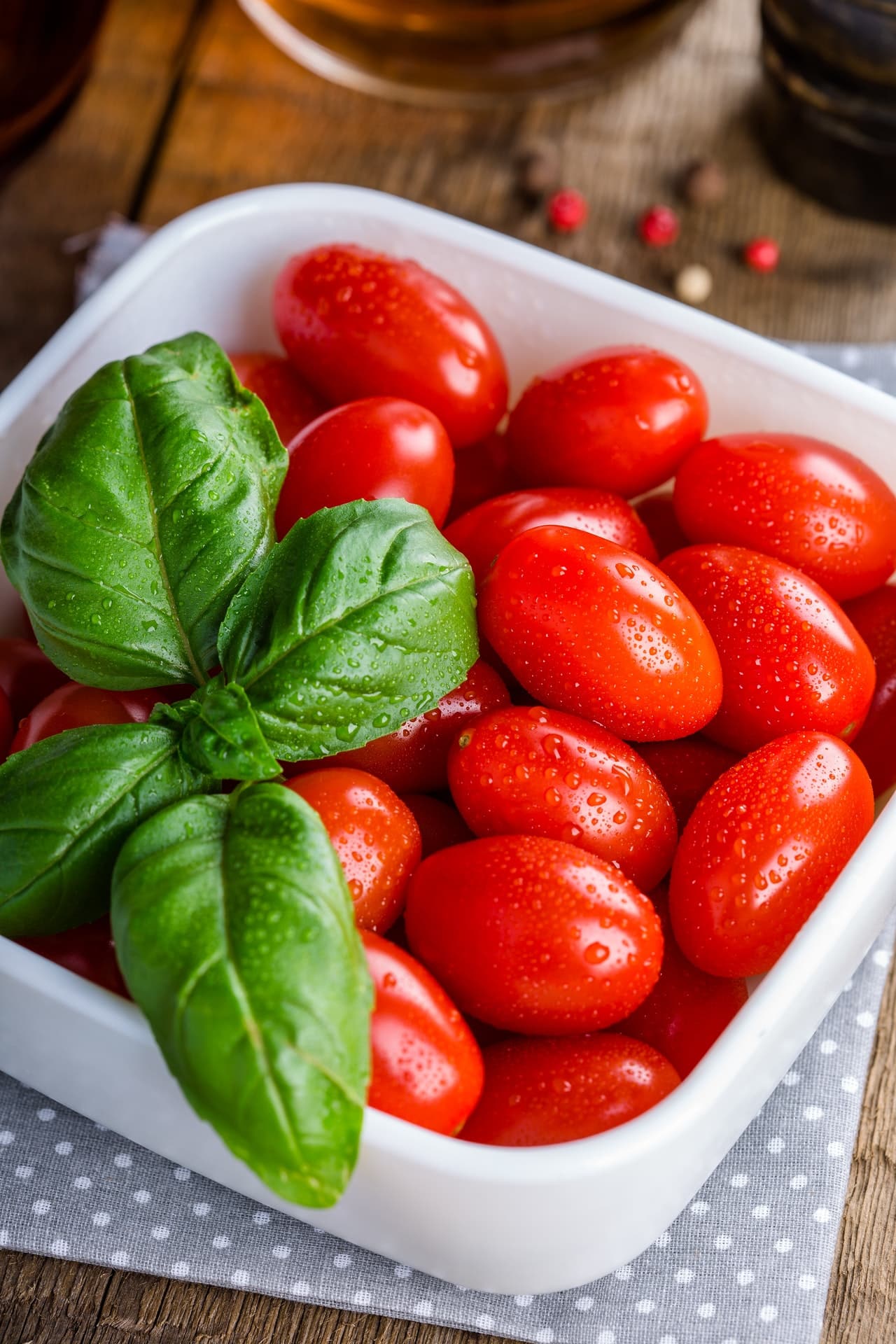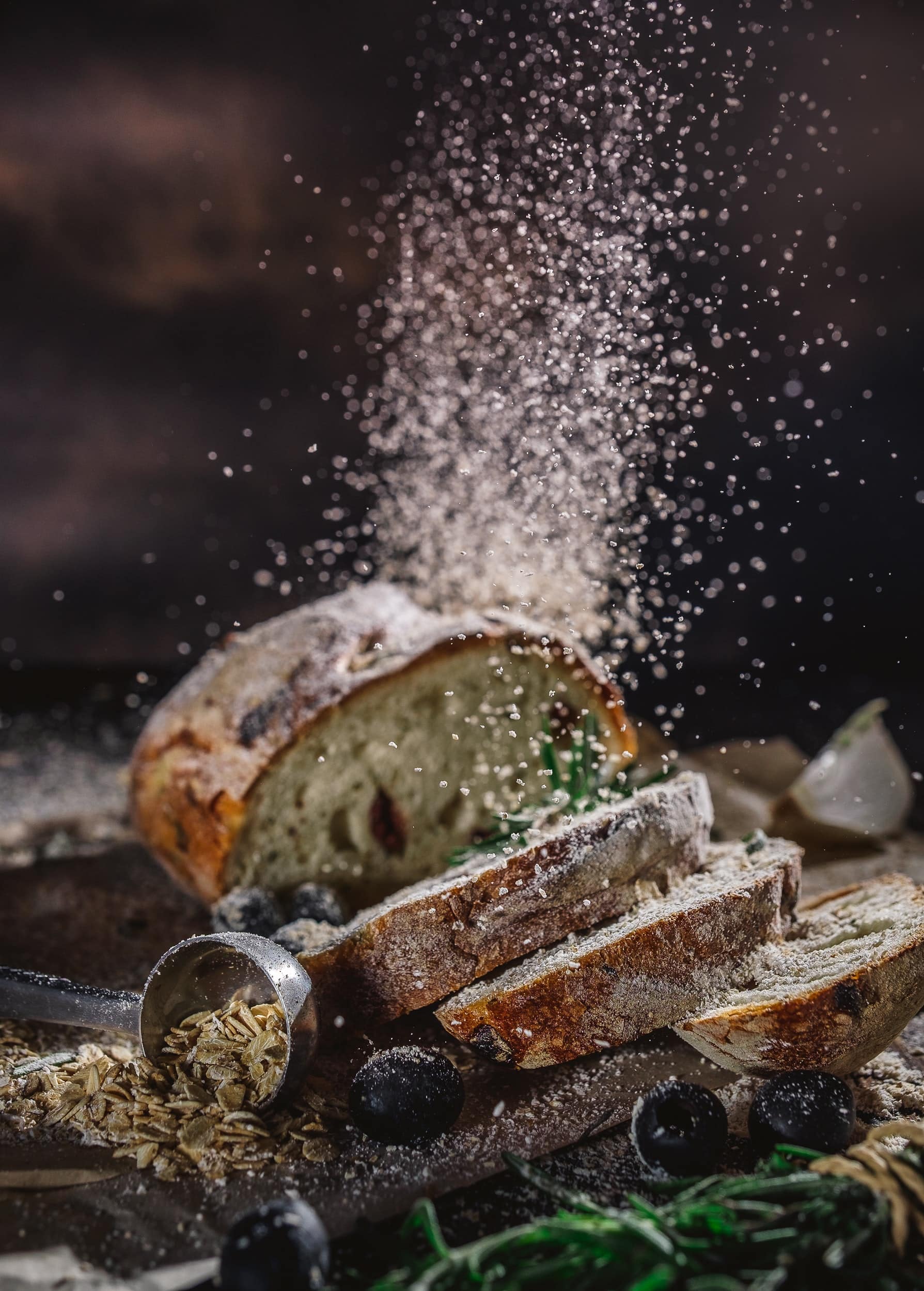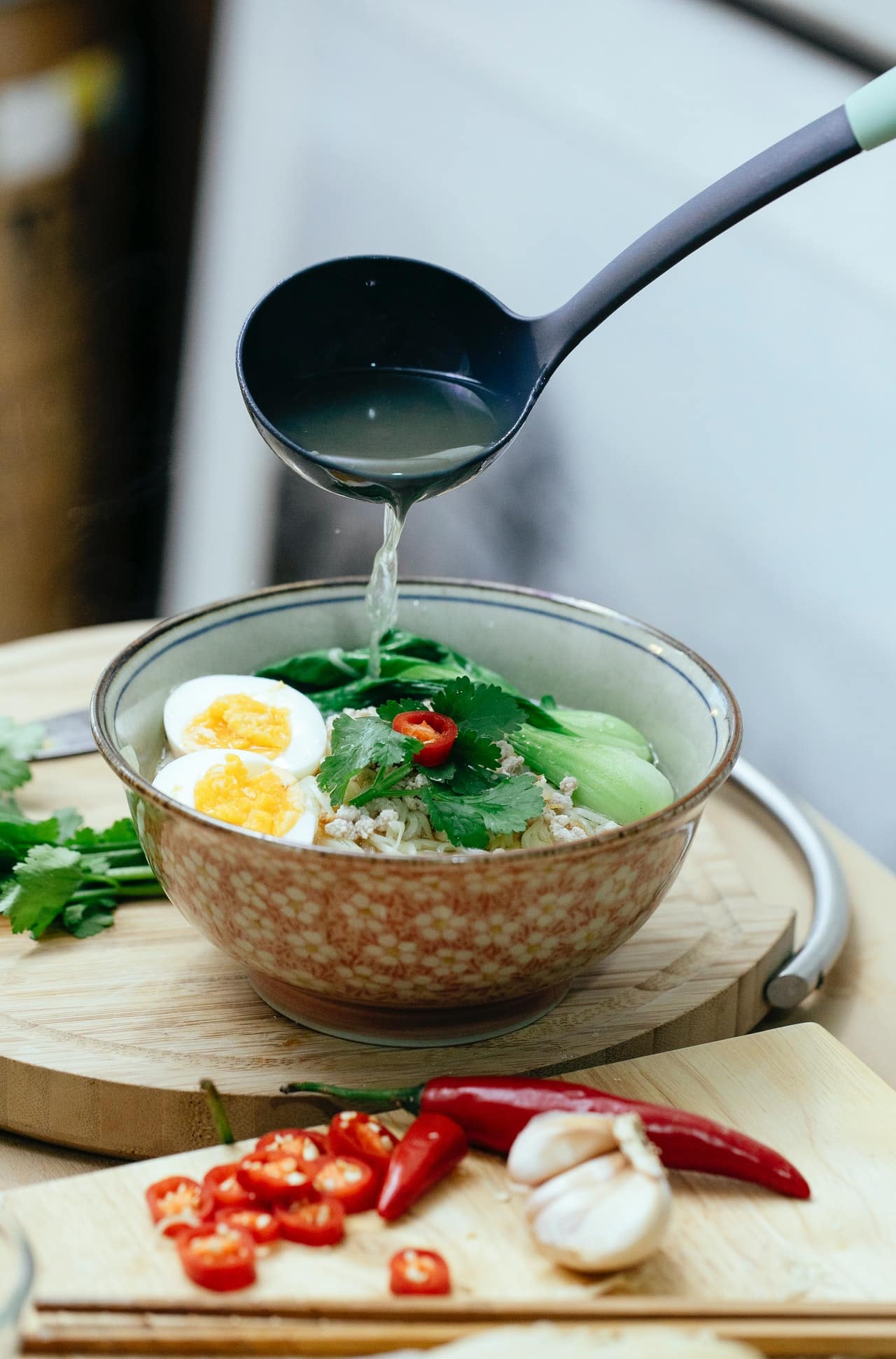Food photography is a fun, interesting and rewarding niche that can involve all kinds of interesting projects, from shooting images for the new restaurant in town to bring the pages of a cookbook to life with mouth watering photography. Food photos can have a very powerful effect on people since they tap into our deep emotional connections to food. We’ve all had that feeling of seeing some food photography that made us feel like we absolutely need to try a dish ASAP. That’s why restaurants and other businesses value having high quality images of their food: they’re a worthwhile investment in their business.
Even though food photography is an important and lucrative type of product photography, figuring out what to charge when you’re new to the industry can be daunting. If you’re an aspiring food photographer and find yourself feeling a bit overwhelmed by the prospect of setting up your pricing structure, you’ve come to the right place. While there is no one-size-fits-all answer to the question of what to charge for a food photoshoot, by the end of this article you’ll have the tools to create a pricing model that you can apply to any project that comes your way. Soon, you’ll be filling up that portfolio website template with images from well-paid gigs that you can be proud of.
Figuring out your Food Photographer Income
Before jumping into the details of how to create an estimate for your business, a good place to start is to identify how much you actually want to make as a food photographer over a given year. While it’s important to be realistic, this exercise will also give you an idea of how much you need to charge in order to actually cover all of your expenses and make a decent rate on top of them.
Keep in mind that while the average food photographer salary in the USA is about $44,000, this will vary widely depending on the city, level of experience, type of clients, and number of jobs booked.
Let’s say that in order to maintain your current expenses and cost of living, you need to earn $50,000. Next, consider how many weeks out of the year you can work, and how many jobs you can take on per week. Remember that one day of shooting will likely require an additional day or two for planning as well as pre-production and post-production. If you are planning to take 4 weeks off over the course of the year for vacation and holidays, that leaves 48 working weeks. If you would like to aim for 2 shoots per week, we can figure out how much you need to be making as your rate per shoot.
In this example, we can divide the annual income of $50,000 by 48 to arrive at a weekly income of $1041.00. If this will be spread over two shoots, each shoot should be worth $520. If you can book shoots that are around $1041.00, then you can get away with just one shoot per week. If you book larger clients and can charge a rate of around $2080, you only need to book two shoots per month.
As you can see, your target rate per job as a food photographer is dependent on how much time you can dedicate to photography, how much income you need to make for it to be worthwhile, and what kind of clients you can book. Earlier in your career, you may well be booking lower budget shoots and trying to get them more often. As you progress, you will be able to focus your time on higher paying clients and charging higher photography rates.
The number you arrive at through this exercise is not a strict rule, but rather a starting point that can help you identify the ballpark of what you should be charging in your business. Keep in mind that this should be roughly your rate before expenses, which will be separate line items on your invoices.

Food Photography Expenses
Now that you have a rough idea of what your fee per job should be in your business, it’s time to look at the expense that that will also add to the price of your services. The rate identified above is simply for your time. There are other costs that go into a successful food shoot, and photographers should avoid the temptation to leave these off of an estimate or invoice for fear of being too expensive. The fact is, they are real costs and they are the responsibility of the client. If you cover them yourself, they’ll only be eating into your income, and you’ll find that your bank account isn’t growing the way it should be even though you’re booking gigs.
So, what are some of the common expenses you should expect to encounter as a photography business? The most commonly encountered ones include:
Equipment
Like any product photographer, you’ll likely need not only a quality camera body and specialized lenses to capture a range of images from tablescapes to macro ingredient shots, but also specialized lighting. Sometimes you’ll be shooting in a bright studio, but other times you might find yourself in a dark restaurant with unappealing fluorescent lighting. In these cases, you’ll definitely need to bring some studio lighting.
Even if you’re bringing equipment you own, it’s common practice for product photography to list a rental fee for your equipment on the invoice. Each shoot contributes to wear and tear on your equipment, so this helps you cover the cost of the equipment and of maintenance and replacement once it’s too old to use.
Studio Rental
If you’re shooting on location at a restaurant or a commercial kitchen, you won’t need to rent a studio. However, if you need to shoot in a studio and your clients will be attending, your kitchen table probably won’t cut it. You can rent studios by the day in just about any town or city, and the rate will depend a great deal on where you live.
Even if you’re lucky enough to have a studio of your own, you can list it as a line item on your estimates and invoices, to make back some of the cost of owning or renting and maintaining the space.
Unlike other types of product photography, food photography usually requires access to a full kitchen, which isn’t something you’ll find in most studios and will likely increase the price of rental. You should also budget some extra time for cleanup of the kitchen, which may take longer than clean up for a standard photoshoot.
Food
If you’re the one sourcing the food for your photoshoot, that should be factored into your photography pricing as well. Sometimes it will be the clients’ job, but on some shoots, the food photographers and their crew are tasked with sourcing and preparing the ingredients.
In most cases, when you’re shooting for a smaller client such as a restaurant that needs images for their website or menus, their own chefs will prepare the dishes. However, for larger corporate gigs such as advertisements, a specialized food stylist will be tasked with preparing the most photogenic version of a dish.
If you are involved with sourcing the food, keep in mind that you should have way more than you expect to need. Food doesn’t always look great for very long, so you may find yourself going through large quantities while capturing different shots.
A Food Stylist
As we mentioned, food styling is a major component of a food photoshoot, and you’ll often work with a professional stylist on set. You can connect with some stylists that you regularly work with in your food photography business, or in some cases, your client will have a food stylist in mind.
If you’re responsible for bringing a food stylist to the shoot, you’ll need to add their fee as an additional expense on your invoice.
Props and Backgrounds
Product photography pricing also includes the cost of props and background that are to be used in a shoot, and food photography pricing is no different. The number of props required for each shoot will be determined in pre-production, but consider that if you’re tasked with sourcing and purchasing the props, you should factor in the time spent researching and sourcing the props, as well as the cost of the props themselves.
Backgrounds and surfaces are also very commonly used in food images, and chances are that after a while you’ll start to develop a collection of commonly used backgrounds that you can bring to each shoot. You can choose to include these as a rental item as well.
Prop Stylist
For advertising clients and other big budget shoots, you may also require the services of a prop stylist. They will work with the food stylist to create the scene that you’ll be photographing. At the start of your career, you might end up wearing the photographer, food stylist, and prop stylist hats all at once, but as you progress you’ll likely work with a larger crew. Make sure you add their rates as expenses when putting together your prices.
Photo Assistant
Depending on the complexity of the shoot, you may need an extra hand to help you on set. This would also count as an additional expense, separate from your own rate.
The total cost of these expenses can, of course, vary widely. Part of your job is figuring out how to deliver the best image you can within the client’s budget, while still making a fair rate for yourself.

Questions for your Food Photography Clients
With a good sense of your target day rate and the list of potential expenses, you’re now equipped to ask your client some questions in order to get a sense of what exactly they’re looking for. The purpose of the questions is to get you and your client as much on the same page as possible so that the expectations of the project are clear and your estimate can be as accurate as possible. Some questions you should ask your client include:
How many photos do you require? This can be more of a conversation than a straightforward question, as clients who haven’t worked much with food photographers may not really know what they require. They might think they need 100 images for their new website, when in fact 10 or 15 would probably do the trick.
Do you have a shot list? The client or the agency they are working through should come up with a clear list of photos for you to capture. You can give them ideas or coach them through the types of shots that are most useful for their project, but you most likely shouldn’t be coming up with the shot list yourself. It can take too much time, and they know better than you how they plan to use the photos.
What props and backgrounds do you require?
Do you require retouching? How detailed?
Will you source the food?
What type of usage license do you require for the images? Where will you use them, and for how long?
What is your timeline for the shoot, including when you expect the shoot to take place and when you expect to have the images delivered?
It would be difficult to create an accurate estimate for a job without the answers to these questions. Based on their requirements, you’ll be able to gauge how much pre-production and post-production a shoot requires, roughly how many hours of shooting, and what kinds of additional expenses such as props and assistants will be necessary. There is a bit of a learning curve, but as you do more shoots, you’ll start to develop an understanding of how much work is involved for each project.
Putting Together your Food Photography Pricing Packages
At this point, you have all of the information you need to start putting together an estimate for your client! There are a number of ways to use the information you’ve collected so far to create an invoice. You can choose to charge:
per image
an hourly rate or by day rates
per project, or,
per recipe
For each of these options, the goal is to arrive at a rate for the job that is sustainable for your business and reflects the value you bring. It’s really up to you which pricing structure you use, but there are some things to keep in mind about each that will help you decide:
Per Image Pricing
This can be a good option if your client isn’t sure how many images they’ll want, since they can see what they like out of the selects you send in a client gallery and flag as many as they want for editing and delivery. If you go with this option, make sure there is a minimum number of images that they have to select that adds up to your required rate. Also, the price per image should reflect how involved the photoshoot is and how much editing each image will require.
For example, if your goal is to make $1000 on a shoot and the images require a lot of detailed retouching, the price might be $200 per image with a minimum of 5 images. If it’s a simpler shoot and you know you won’t spend hours retouching each image, an appropriate price might be $100 per image with a minimum of 10 images.
This gives your client some flexibility in terms of what gets delivered, and you can still be sure you make your rate, at minimum.
Hourly or Daily Pricing
A day rate or hourly rate isn’t always a good idea, since it can encourage customers to try to get as much out of you as possible in a short amount of time. They don’t always realize that just because you’ve managed to take a certain number of photos in four hours instead of six, you still have many hours of editing ahead of you.
For this reason, if you prefer to offer an hourly or daily fee, make sure you also make it clear that the number of images that can be delivered is limited for shorter gigs.
Package Pricing
Packages are a great way to clearly define your deliverables, and incentivize customers to opt for larger photo packages in order to get better value for their money.
For example, you might have a 5 image package, a 10 image package, and a 20 image package. The price per image in the 5 image package might work out to $200, while it’s only $100 in the 20 image package. That way, you still make more, while your client is getting a better deal as well.
For this pricing structure as well as any other, it’s a good idea to make the price for additional images clear in your contract. It’s not uncommon for a client to fall in love with, say, 12 shots when they ordered a 10 image package. By making the fee for each additional delivered image clear, you save yourself from haggling at the end of a gig.
Per Recipe Pricing
This is less common but is sometimes used depending on the job. For example, if a food blogger is hiring you to take some professional images for their site, each recipe might involve a new set up and prop styling. In that case, taking 10 images of one recipe is a lot less work than taking 10 images over 5 different recipes.
If you’re shooting a project that involves a large amount of work for each new recipe or set up, you might want to consider per recipe pricing that captures the amount of prep involved for each.
A super important tip, no matter how you price your work, is to make sure that you get all of your expectations clearly in writing. It’s better to overdo this part since people invariably forget details of conversations and verbal arrangements.
At this point, you’re basically a product photography pricing pro! Figuring out your pricing structure is a very important part of your business, and many photographers undervalue their work when they’re starting out. By clearly breaking down the cost of your services, you can justify your rates to each client in a clear and easily understood way.
Time to book those dream food photography gigs and fill up your online portfolio!
Want more tips for managing your photography business? Read on:
How Multiple Website Can Grow Your Photography Business












